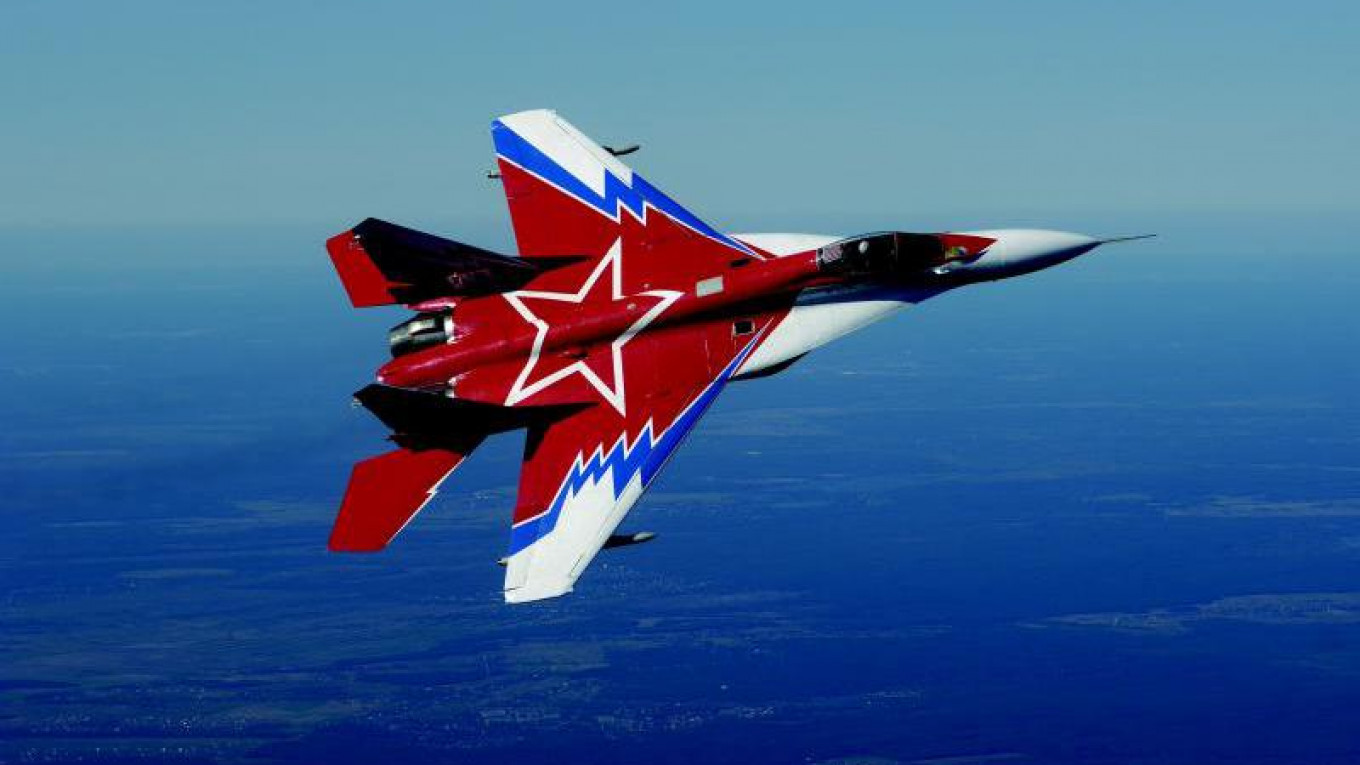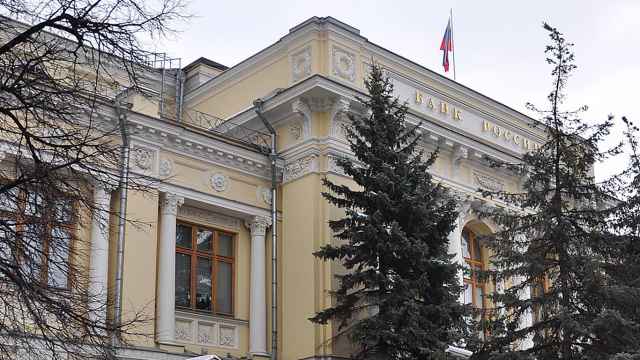After years languishing behind competitors at home and abroad, Russia's iconic MiG aircraft manufacturer has been thrown a lifeline. The company is now building 46 brand-new MiG-29M fighter jets in a contract reported to be worth at least $2 billion.
Yet despite the hints which have appeared in the Russian press over the past year, official confirmation remains elusive. The jets are being built for an unspecified buyer. Only a shareholder’s report released by a MiG component supplier has confirmed that the order is real. The document outlines a deal for 92 engines used in the MiG-29. With two engines in each fighter, the contract corresponds with reports of a 46-fighter contract in the works.
Yet the key question remains – who are these fighters for?
Forty-six combat jets represents a large arms deal, and one that the MiG company desperately needs. The company has lost several major contracts to both foreign and domestic competitors over the past two decades, and is struggling to keep up with the competition. It has also failed to deliver on signed contracts to major Russian customers such as India.
“Russia has not formally announced
the deal because of previous delays on contracts. When you announce a
deal and something goes wrong, the damage to your image as a reliable
procurer is enormous,” says Yury Barmin, an expert on Russian
foreign affairs.
Who’s Buying?
The leading candidate for the 46 MiGs is Egypt. Speculation is largely fueled by enigmatic statements from Russian defense industry officials at trade shows and press conferences over the past year. The official line is that the MiGs are going to North Africa, and that the exact customer cannot yet be named. Russia's Vedomosti newspaper in May last year reported that the jets were going to Egypt as part of a $3.5 billion arms deal signed by President Vladimir Putin and Egyptian President Abdel el-Sisi in April 2015.
Any potential deal with Egypt would make good, geopolitical sense. Moscow is working to solidify its role as partner and arms dealer to Sisi’s government: taking advantage of a void left by the United States, which began distancing itself from Egypt after Sisi came to power in 2014. Given that Russia’s export catalogue amounts to some $14 to $15 billion annually, a $2 billion MiG contract – which appears to be scheduled to be fulfilled over the course of 2016 to 2018 – is a big win for Russia.
Egypt pursues a policy of diversified defense imports. Historically, it has maintained an air force that is part French, part American, and part Russian. The United States recently partially restored defense ties with Sisi, delivering a dozen F-16 fighters. France too began deliveries last year of new jets to Egypt. Egypt's force of aging MiGs is due for replacement.
Russia has benefited greatly from Washington’s downscaled engagement with Cairo. When France agreed to sell two Mistral-class helicopter carriers – built for the Russians before sanctions – to Egypt, Moscow quickly stepped in to secure deals to supply helicopters designed for service on those ships. Egypt has also expressed an interest in a variety of other Russian-built weapons systems.
But Egypt is not the only candidate, however likely it appears to be. Russia has also been courting Iran, which flies a vintage air force made up of 1970s American and Soviet aircraft. The Iranians would make a good customer for 46 of the latest MiGs. Yet under the Iran nuclear deal, offensive weapons deals with Tehran can be vetoed by the UN Security Council for the next five years – something that could complicate a Russian-Iranian MiG deal.
The MiGs could theoretically be going
to Syria, but it is not clear how Assad’s embattled government
could afford them. India too traditionally buys Russian aircraft, but
its bulk orders typically go to Sukhoi, stipulate localized
production to some extent, and MiG has already lost out on a major
fighter jet tender in India. China, which also buys Russian hardware,
does not appear to have need for fighters like the MiG-29 – a light
multi-role fighter jet.
Good for MiG
If the MiG fighters are intended for Egypt, the deal is a win for Putin and his ambitions to reassert Russia’s role in the Middle East arms market. It still remains unclear to what extend Moscow can leverage Washington’s inattention to Cairo: Russian weapons sales to Egypt in 2015 were abysmal.
Russian exports to Egypt dropped from $75 million in 2014 to $30 million in 2015, according to data compiled by the Stockholm International Peace Research Institute (SIPRI). U.S. exports saw a surge from $190 million to $585 million in the same year. Considering that arms deals are often spread over several years, it remains to be seen how the $3.5 billion military trade deal signed by Putin and Sisi last year impacts these statistics.
Vadim Kozyulin, an arms trade expert at the Moscow-based PIR Center, said that Russia would struggle to overtake the United States as Egypt's key arms dealer. “[But], the renaissance in military cooperation between Russia and Egypt will make two countries much closer — not only in terms of the delivery of military hardware, but also education and training for the Egyptian military, supply of spare parts, upgrade and modernization of equipment in the future,” he says. “There will also be certain political guaranties in case of an international crisis and even some level of political coordination.”
While Russia's defense industry may benefit as a whole from continued engagement with Egypt, the 46-fighter contract represents something of a lifeline for the MiG company. Since the fall of the Soviet Union, MiG has languished in comparison to its more successful counterpart, the Sukhoi aircraft company.
Since 1991, Sukhoi has exported 252 fighter jets, making $15.4 billion, data provided by the IHS consulting firm revealed last year. In comparison, MiG has exported 185 jets to make a profit of $8.6 billion.
Sukhoi enjoys several advantages over MiG. Its fighter jets are generally larger and more adaptable to various combat roles. There is also an element of reputation. MiG has struggled to deliver on large contracts in the past: Algeria notoriously demanded a refund on a $1.28 billion MiG-29 fighter contract in 2008 over quality concerns. Algeria was given Sukhoi Su-30s instead.
Considering past performances, MiG's landmark Egypt deal is by no means ensured to succeed.
“While Russia has clearly moved into the vacuum left open by the Obama administration in Egypt and other countries, Russia still has significant issues with product support on its equipment,” says Mark Bobbi, a principal analyst for military aircraft at IHS. “They will not make major inroads unless its awful product support and product quality is improved dramatically.”
A Message from The Moscow Times:
Dear readers,
We are facing unprecedented challenges. Russia's Prosecutor General's Office has designated The Moscow Times as an "undesirable" organization, criminalizing our work and putting our staff at risk of prosecution. This follows our earlier unjust labeling as a "foreign agent."
These actions are direct attempts to silence independent journalism in Russia. The authorities claim our work "discredits the decisions of the Russian leadership." We see things differently: we strive to provide accurate, unbiased reporting on Russia.
We, the journalists of The Moscow Times, refuse to be silenced. But to continue our work, we need your help.
Your support, no matter how small, makes a world of difference. If you can, please support us monthly starting from just $2. It's quick to set up, and every contribution makes a significant impact.
By supporting The Moscow Times, you're defending open, independent journalism in the face of repression. Thank you for standing with us.
Remind me later.






